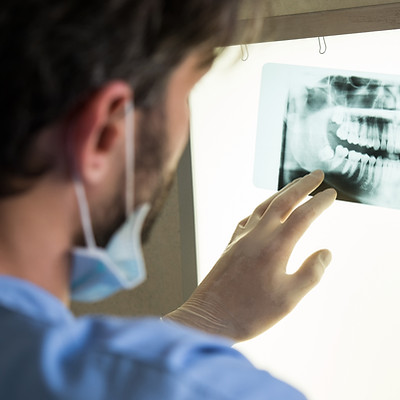
Oral or mouth cancer
How common is it?
Cancers involving the mouth (tongue, cheek, gums, lip and jaw bone) are the most common cancer in Indian men (11%) and fifth most common cancer amongst women (4%). In India, almost 100,000 people develop oral cancer each year.
What are the symptoms?
Some of the common symptoms are a lump or sore in the mouth or gums, oral bleeding, loosening teeth, restriction in tongue movement, painful swallowing, a lump in the neck, numbness in the face or difficulty opening the mouth. Some patients can also have pain in the mouth during eating or swallowing. If you have any of these symptoms beyond two weeks, they need evaluation by a doctor.
What causes it?
The most common cause of oral cancer is tobacco. In our country, tobacco is smoked (as cigarettes or beedis), chewed (as pan, khaini, gutkha or zarda) or inhaled (as snuff). All of these carry a risk of developing oral cancer. Alcohol intake further compounds this risk. For people who completely stop using tobacco, the oral cancer risk falls by about 35% 4 years after quitting and 80% 20 years after quitting. Patients who use tobacco or alcohol require oral cancer screening, which is a simple examination of the mouth by an expert – this has been shown to detect cancers earlier and reduce deaths associated with oral cancer by 43%. They may also benefit from what is called mouth self-examination.
Although 80% of patients have a history of tobacco use, the remainder doesn’t. The other causes of oral cancer are poor oral hygiene or nutrition, longstanding infections with herpes or candida, chronic injury from ill-fitting dentures or sharp teeth, sun exposure (for lip cancers), and long-standing immunosuppressant therapy following organ transplant. Recent trends indicate that there are increasing numbers of younger patients (35-55y) with no tobacco or alcohol exposure who develop oral cancer. Anyone with symptoms lasting over two weeks, irrespective of age, should be evaluated.
How do you diagnose it?
The majority of these cancers are in an accessible part of the mouth and have a typical appearance. The diagnosis involves two parts. The first is a biopsy of the tumour (generally done in the clinic after an injection of local anaesthetic), which determines which type of cancer you have. The most common type is squamous cell carcinoma (which arises from the mucous lining of the mouth), however rarely other types such as tumours arising from minor salivary glands in the mouth or from tongue muscle. The second is imaging, either CT scan, MRI, PET or a chest X-ray in various combinations to determine the stage of the tumour and how far it has spread. Both of these will help determine what the best treatment plan is for you.
How do you treat it?
Whenever possible surgery is the first choice of treatment in oral cancer. The goal of surgery is to completely remove the cancer with a rim of uninvolved tissue (known as a ‘margin’), and remove the draining lymph nodes in the neck. Very early tumours may not need removal of the lymph nodes, while advanced tumours may require radiotherapy or a combination of radiotherapy and chemotherapy after removal of the tumour and lymph nodes. Except for very small tumours, reconstructive surgery after removing the tumour is vital; this helps restore swallowing and speech. Depending on the area of the mouth involved, highly specialized reconstructive surgery, such as dental implant-guided bony reconstruction of the jaw, are indicated to restore teeth. The aims of surgery are to remove the tumour completely, restore function (speech, swallowing and chewing) and cosmesis (physical appearance).
In specific cases where the patient is not fit for surgery or refuses surgical treatment, radiotherapy or chemotherapy with radiotherapy has been used. When the tumour is too large to be removed completely or has spread beyond the mouth and neck to other organs like lung, liver or bones, non-surgical treatment is preferred.
Is it curable?
For patients with early stage tumours (<4 cm in size and no lymph nodes involved), over 80% of patients are alive at 5 years. For late stage tumours, which are extensive or have spread to multiple lymph nodes in the neck, around 35% of patients are alive at 5 years. However each patient is different; it does not mean that patients with advanced disease do not survive. To maximize chances of survival, early diagnosis and appropriate and complete treatment from qualified specialists are of vital importance.
What does the road to recovery look like?
The extent of your treatment will determine how long it takes you to recover. A small surgical procedure may take two weeks to recover from while a major surgery following by radiotherapy and chemotherapy may take months to completely recover from. It is important to think of your treatment as a marathon rather than a sprint, and take help from those around you, whether they are medical professionals, or friends and family. The team involved in your rehabilitation may include the speech and swallowing therapist, the dental team, the physical therapist and the pain specialists. Follow-up after treatment is crucial – this is to not only assess your recovery, but also to check for recurrence or to identify new tumours (this can happen in 5-15% of patients).
